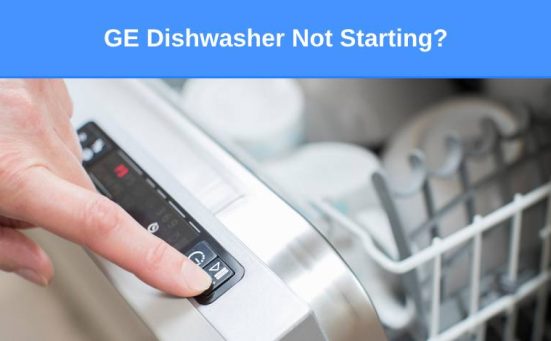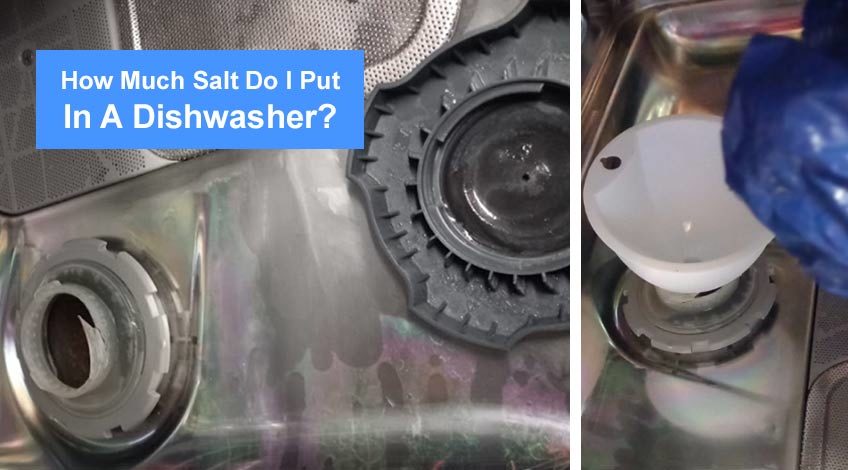
How Much Salt Do I Put In A Dishwasher? (the true answer)
Regularly adding about a cup of dishwasher salt to your machine is crucial, especially in hard water areas, to prevent limescale and keep your dishwasher in top condition. This special salt keeps your dishwasher working efficiently and your dishes spotless.
But how do we know when to add salt to the dishwasher? And how much salt is enough?
In this article, we’ll answer these questions and explain exactly what dishwasher salt is and what it does. Keep reading to learn how often to replenish the salt and how to recognise when your dishwasher is running low.
Why Do We Add Salt To The Dishwasher?
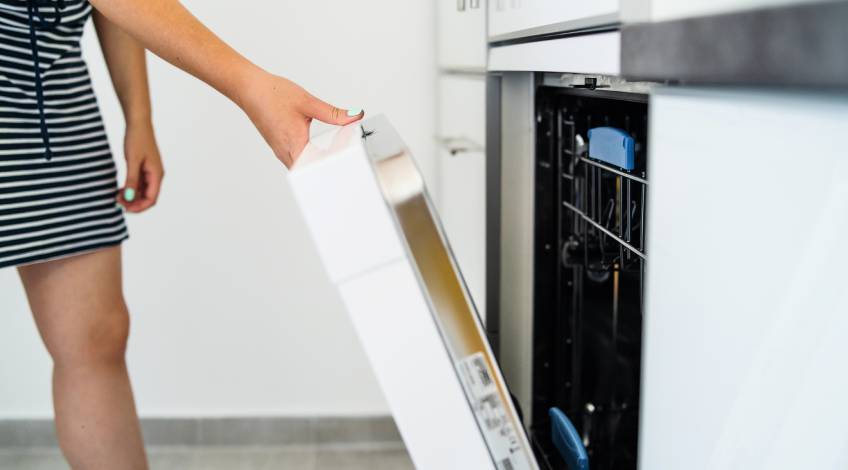
Dishwasher salt isn’t just your average sea salt or table salt; it’s actually a special form of sodium chloride, specifically designed with larger granules.
This is crucial because the bigger size ensures the salt dissolves at a slower pace, preventing any blockages in your dishwasher’s softener unit.
Dishwasher salt is used to remove magnesium and calcium from the water that cleans dishes. These minerals, found especially in hard water, are safe to consume. In other words, drinking water containing calcium and magnesium is perfectly safe.
Whilst it’s perfectly safe for us human beings to consume magnesium and calcium, it’s not so safe for your dishwasher.
In fact these minerals can cause the dishwasher to clog and over time they can be the reason a dishwasher packs up altogether. Magnesium and calcium particles form what is commonly known as limescale.
Limescale builds up in pipes and can block them over time. Dishwashers use resin balls to remove these harmful minerals from the water. To maintain their effectiveness against limescale, these resin balls must be regularly recharged with salt.
Adding dishwasher salt to the dishwasher;
- Prevents hard water mineral build-up
- Prolongs the life of the dishwasher
- Promotes clean, shiny dishes free from watermarks
Dishwasher Detergents
On top of which, dishwasher detergents are designed to operate under soft water conditions. The presence of magnesium and calcium in your water indicates that your water is anything but soft.
How Do We Know When To Add Salt To The Dishwasher?
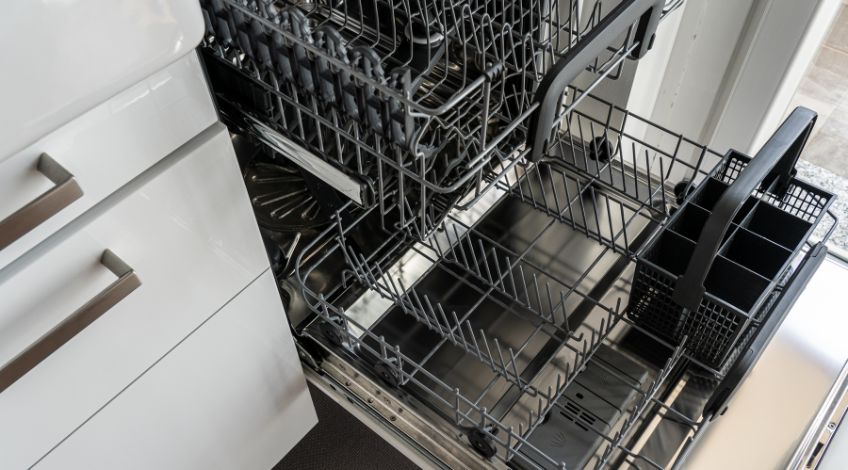
Most modern dishwashers have low salt indicator lights which let us know it’s time to add more salt. If your dishwasher doesn’t have a low salt indicator, it is reasonable to expect the dishwasher salt reservoir to need topping up around once a month (depending on how often you use it).
Make sure to fill the salt regularly as this ensures that your dishwasher remains at peak performance, especially in areas with significant water hardness. Regular checks and proper refilling can help prevent common dishwasher issues and keep your dishes looking spotless after every wash.
How Much Salt Do I Need To Put In My Dishwasher?
Dishwashers vary widely in brand and model, each with differently sized salt reservoirs, making this a complex question to answer.
Plus as we have just seen, the amount of salt needed to combat the magnesium and calcium or hardness level of the water where you live, varies from area to area.
If you’re unsure of how much salt to add, always check the packaging for guidance. Use a measuring cup for accuracy and a funnel to make the process cleaner and easier.
How Will I Know When My Dishwasher Has Enough Salt?
To check if your dishwasher has enough salt, simply fill the reservoir until the salt reaches the top.
Take care when filling the reservoir with salt not to spill any into the dishwasher. If you do spill any be sure to remove it as soon as you have finished filling the reservoir as salt is corrosive.
How To Add Salt To The Salt Reservoir
You will need dishwasher salt, a funnel, and a cloth.
- Locate the salt reservoir
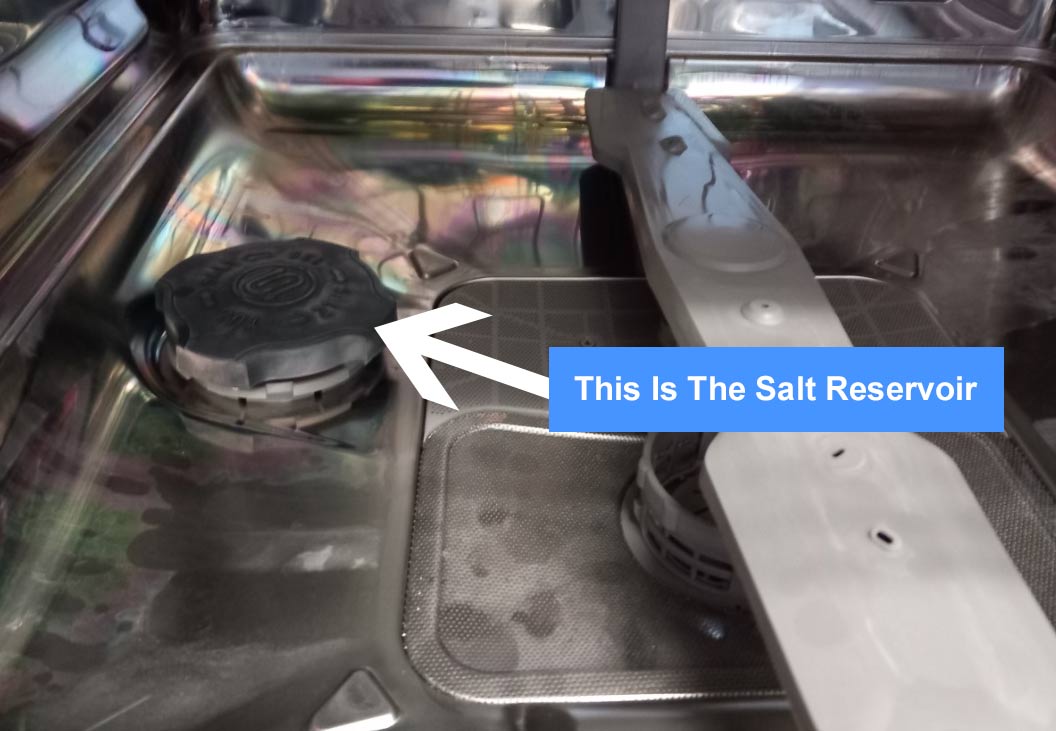 Remove the bottom drawer/shelf from your dishwasher and find the plastic cap next to the drain.
Remove the bottom drawer/shelf from your dishwasher and find the plastic cap next to the drain. - Open the salt reservoir
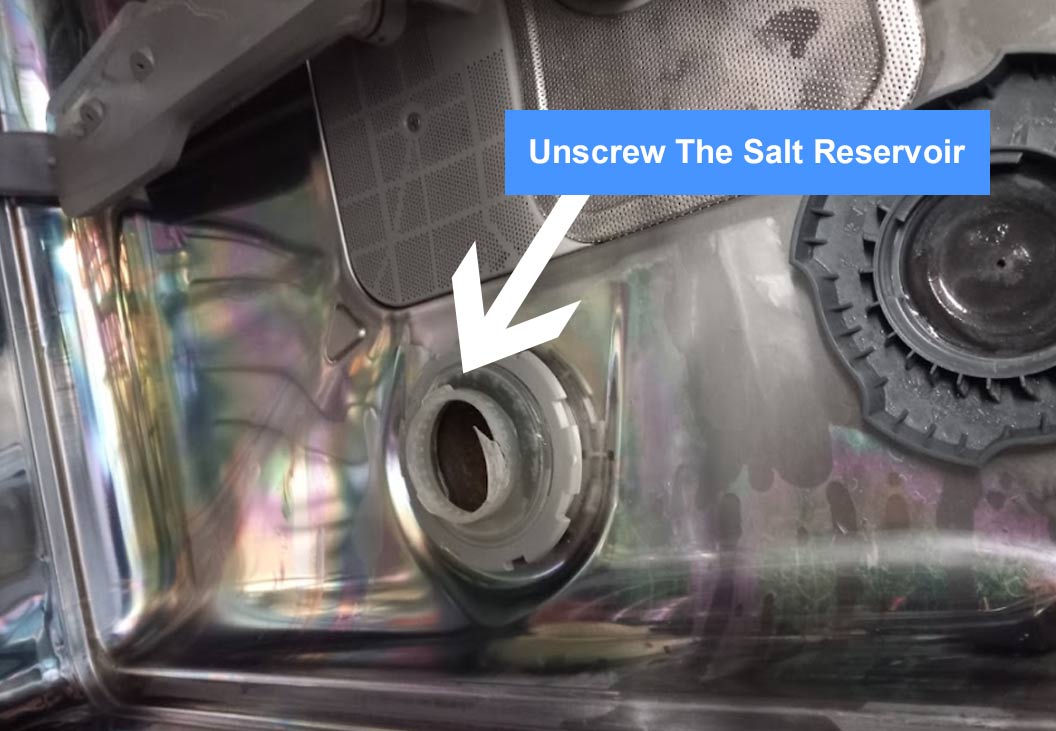 Unscrew the cap to open the salt reservoir, this should be full of water (don’t worry if some water spills out as you open the cap, this is quite normal).
Unscrew the cap to open the salt reservoir, this should be full of water (don’t worry if some water spills out as you open the cap, this is quite normal). - Place the funnel in the top of the reservoir
Your dishwasher should have been supplied with a special funnel specifically for this purpose. If not, don’t worry, any small to medium funnel will do. - Pour in dishwasher salt
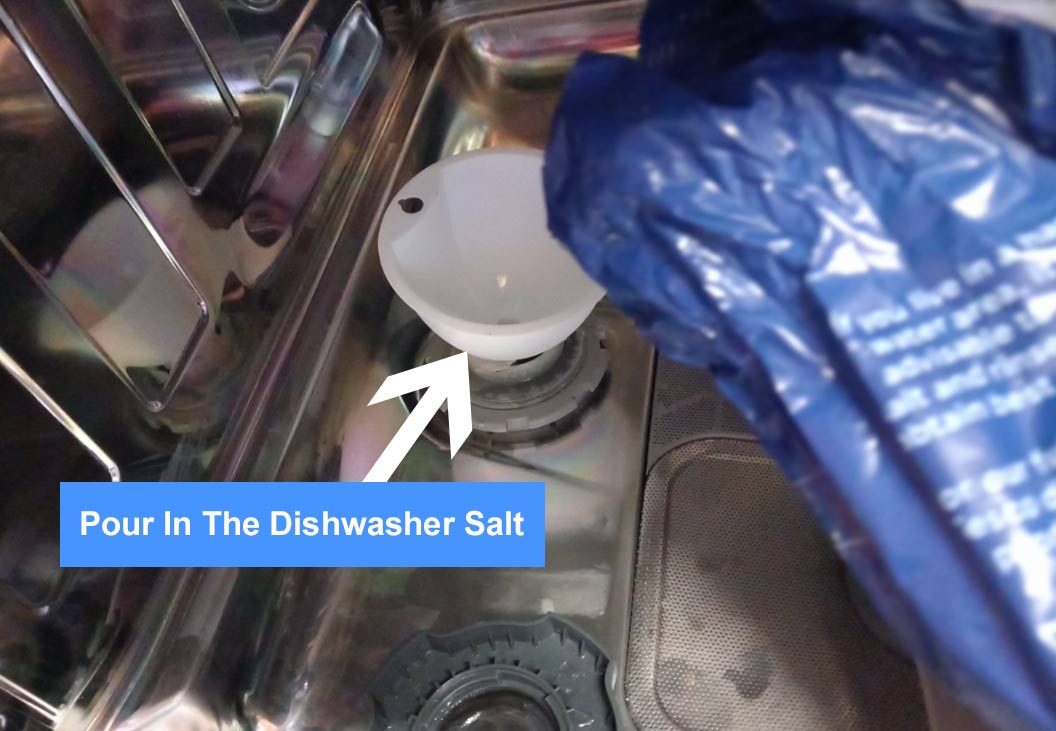 As you pour the salt into the reservoir, water will be displaced, this is perfectly normal.
As you pour the salt into the reservoir, water will be displaced, this is perfectly normal. - Once enough salt has been added remove the funnel and screw back the cap
You will know when the salt reservoir is full because salt will be visible just below the water level in the reservoir. - Remove any salt spilled into the dishwasher
Using a damp cloth, wipe away any salt from inside the dishwasher.
Do I Still Need To Add Salt If I Use 3 in 1 Dishwasher Tablets?
Many of these 3 in 1 dishwasher tablets will say they have “salt action” but this doesn’t mean you should omit adding salt to the salt reservoir.
3 in 1 tablets don’t refill the water softener salt reservoir in your dishwasher; they remain in the cleaning chamber.
Whereas, dishwasher salt doesn’t enter the dishwasher chamber but is used to soften the water which enters the machine.
SEE ALSO:
- What Does Dishwasher Salt Do? (and where to put it)
- Dishwasher Salt Alternatives (what you can use instead)
Frequently Asked Questions
Dishwashers need salt to soften the water, which is crucial because hard water, rich in magnesium and calcium, can cause limescale buildup and affect your dishwasher’s performance. The salt removes these minerals, ensuring your dishes are clean and your machine operates efficiently.
To use dishwasher salt, first find the salt reservoir at the bottom of your dishwasher. Remove the bottom rack to access the reservoir cap. Unscrew the cap and use a funnel to fill the reservoir with salt, being careful to avoid spilling any since it can be corrosive. After filling, securely replace the cap and reinstall the bottom rack.
How often you should refill your dishwasher with salt depends on your usage and the hardness of your local water. In areas with hard water, you may need to add salt more often to maintain optimal performance. Typically, it’s a good idea to check the salt level monthly and refill as needed. If your dishwasher has a salt indicator light, use it as a helpful reminder. Regularly topping up the salt prevents limescale buildup and keeps your dishes clean and shiny.
It is impossible to add too much salt to the dishwasher and cause your cutlery to rust. If your cutlery is rusting, it’s simply because it should never have been put in the dishwasher as it wasn’t dishwasher safe.
You can’t put too much salt in the dishwasher as any excess will be washed away during the first subsequent rinse.
If your dishes taste salty after being washed in the dishwasher it’s likely that the salt reservoir cap has broken or the seal is damaged or the cap has not been replaced properly.


